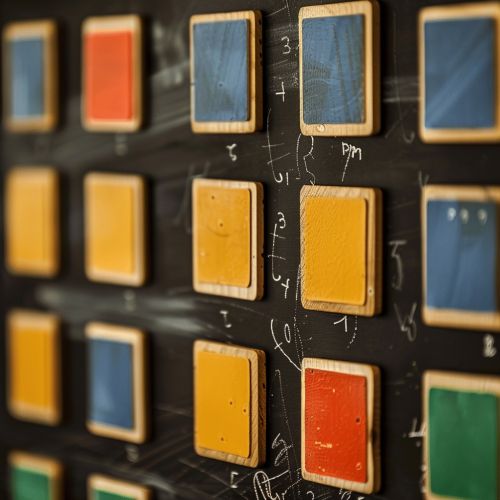Safe prime
Introduction
A safe prime is a prime number of the form \( p = 2q + 1 \), where \( q \) is also a prime number. In this context, \( q \) is referred to as a Sophie Germain prime. Safe primes are of particular interest in number theory and cryptography due to their unique properties and applications.
Mathematical Properties
Safe primes possess several intriguing mathematical properties. One of the most notable is their relationship to Sophie Germain primes. If \( p \) is a safe prime, then \( p-1 \) is twice a prime number, making \( p-1 \) a highly composite number. This property is significant in various cryptographic algorithms because it ensures a high level of security.
Another important property is that safe primes are always congruent to 3 modulo 4. This can be derived from the form \( p = 2q + 1 \). Since \( q \) is a prime number greater than 2, \( q \) must be odd. Therefore, \( 2q \) is even, and \( 2q + 1 \) is odd, making \( p \) congruent to 3 modulo 4.
Applications in Cryptography
Safe primes are extensively used in public-key cryptography, particularly in the Diffie-Hellman key exchange and the Digital Signature Algorithm (DSA). The security of these cryptographic systems relies heavily on the difficulty of the discrete logarithm problem in a finite field, which is enhanced by the properties of safe primes.
In the Diffie-Hellman key exchange, safe primes ensure that the group generated by the primitive root modulo \( p \) has a large prime order, which is crucial for the security of the key exchange process. Similarly, in the Digital Signature Algorithm, safe primes contribute to the generation of secure keys and signatures.
Generation of Safe Primes
Generating safe primes is a computationally intensive task. The process typically involves the following steps:
1. Generate a random prime number \( q \). 2. Compute \( p = 2q + 1 \). 3. Check if \( p \) is a prime number.
If \( p \) is prime, then \( p \) is a safe prime. Otherwise, the process is repeated with a new \( q \). Various algorithms and techniques, such as the Miller-Rabin primality test, are employed to efficiently test the primality of \( q \) and \( p \).
Distribution of Safe Primes
The distribution of safe primes is less dense compared to the distribution of general prime numbers. This is because both \( q \) and \( p = 2q + 1 \) must be prime, which imposes additional constraints. Despite their relative scarcity, an infinite number of safe primes exist, as proven by number theorists.
Known Safe Primes
Several safe primes are known and have been documented. Some of the smaller safe primes include:
- 5 (where \( q = 2 \)) - 7 (where \( q = 3 \)) - 11 (where \( q = 5 \)) - 23 (where \( q = 11 \))
Larger safe primes are also known and are often used in cryptographic applications. For instance, the RSA cryptosystem frequently employs large safe primes to enhance security.
Computational Challenges
The generation and verification of safe primes pose significant computational challenges. As the size of the primes increases, the time required for primality testing also increases. Advanced algorithms and high-performance computing resources are often necessary to generate safe primes of the size required for modern cryptographic applications.
Research and Developments
Ongoing research in number theory and cryptography continues to explore the properties and applications of safe primes. Recent developments include improved algorithms for primality testing and the discovery of new safe primes. These advancements contribute to the robustness and security of cryptographic systems.
See Also
- Prime number
- Sophie Germain prime
- Cryptographic algorithm
- Diffie-Hellman key exchange
- Digital Signature Algorithm (DSA)
- Discrete logarithm problem
- Miller-Rabin primality test
- RSA cryptosystem
References


